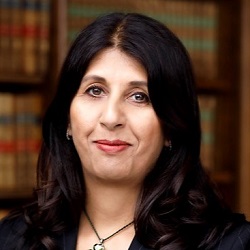
Shuja: Selection process needs to be urgently reformed
The proportion of Black judges in the courts and tribunals of England and Wales has remained at 1%, the same as nine years ago, while the proportion of Asian judges doubled in the same period from 3% to 6%, according to the latest judicial diversity report from the Ministry of Justice (MoJ).
Meanwhile the proportion of non-barrister judges (almost all of whom are solicitors) in the courts and tribunals fell over a similar period from 48% in 2015 to 42%.
Female judges are now the majority in the tribunal system (52%). In the courts, their representation has increased from 24% in 2014 to 37% (42% across both).
The MoJ said women accounted for 50% of the eligible pool and 51% of recommendations in judicial selection exercises.
The proportion of courts and tribunal judges from an ethnic minority background has increased from 7% nine years ago to 11%, and for judges from a mixed ethnic background from 2% to 3%.
There was no disparity between the proportion of ethnic minority lawyers in the legal profession and those recommended for appointment – 16%. Ethnic minority candidates did, however, make up a much higher proportion (27%) of applications for appointment.
Statisticians said for selection exercises that closed in the 2022-2023 financial year, ethnic minority candidate numbers at the application, shortlisting and recommendation stages were not high enough to publish figures for specific ethnic groups.
However, they estimated that the likelihood of success from eligible pool to recommendation was 58% lower for Black candidates and 20% lower for Asian candidates than White candidates.
There was also a disparity when it came to the legal professions, with solicitors making up a bigger proportion of applicants for judicial office than barristers, 48% compared to 35%, but a smaller percentage of recommendations for appointment, 35% compared to 50%.
Nick Vineall KC, chair of the Bar Council, commented: “The latest diversity statistics show that progress is being made, but it is not being made equally across the board.
“For example, Black candidates are disproportionately less likely to succeed than White candidates. We need to continue efforts to understand why we are seeing this pattern.”
Lubna Shuja, president of the Law Society, said: “There has been some progress in improving judicial diversity in the courts but more needs to be done.
“Women still only make up just over a third of judges. The proportion of the judiciary from a non-barrister background remains persistently low despite solicitors making up the majority of applicants.
“The selection process needs to be urgently reformed. The requirement to consult sitting judges on candidates’ suitability, known as ‘statutory consultation’, must be reviewed with serious consideration given to removing it altogether, as it is not working fairly or transparently at the moment.”
A spokeswoman for CILEX said it was “particularly noteworthy” that references to CILEX lawyers were “often minimal” in the report compared to barristers and solicitors because the number of CILEX appointments was “too small to register” in the analysis.
“CILEX therefore looks forward to the recent legislative change opening up more judicial roles to CILEX members, ensuring these statistics improve over time, with all appointments being open to this diverse part of the legal profession in due course.”
Matthew Hill, chief executive of the Legal Services Board, said the report “must be used to evaluate what is and isn’t working” to achieve “meaningful” change.
“The legal services regulators must consider what further data or research might be required about the professions they regulate to inform diversity initiatives. This will help improve the diversity of the lawyers who progress towards a career in the judiciary.”














Leave a Comment